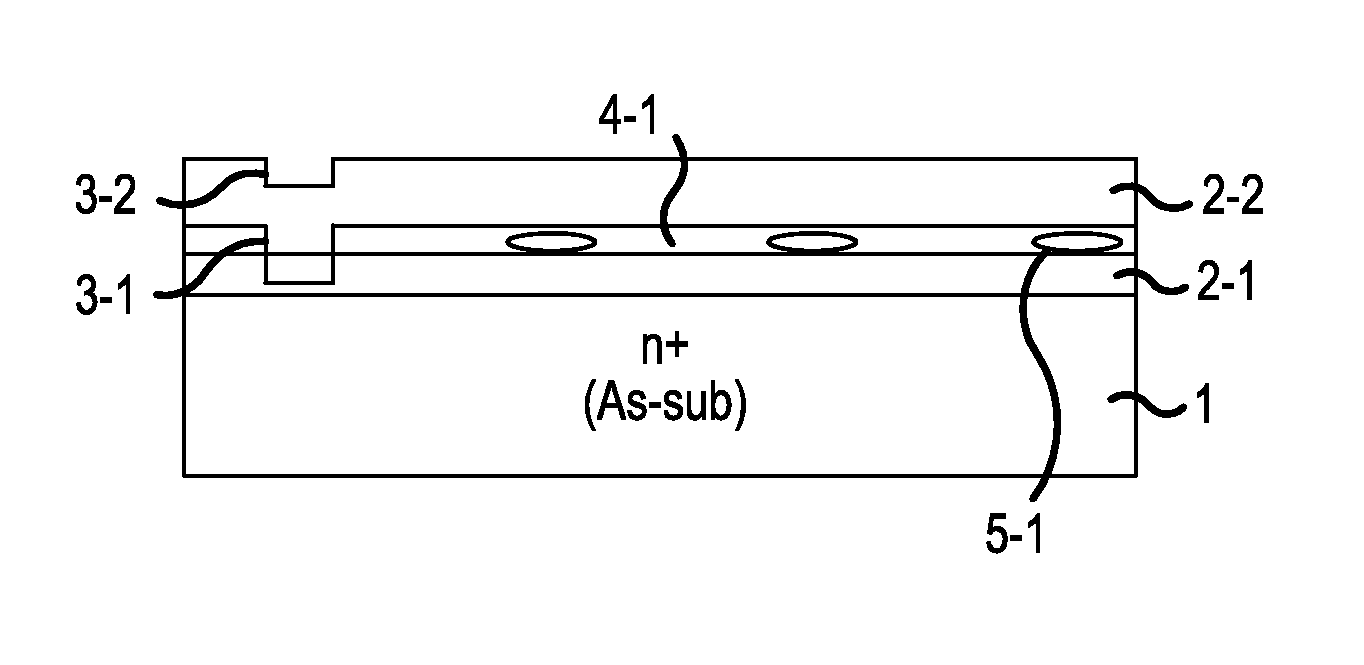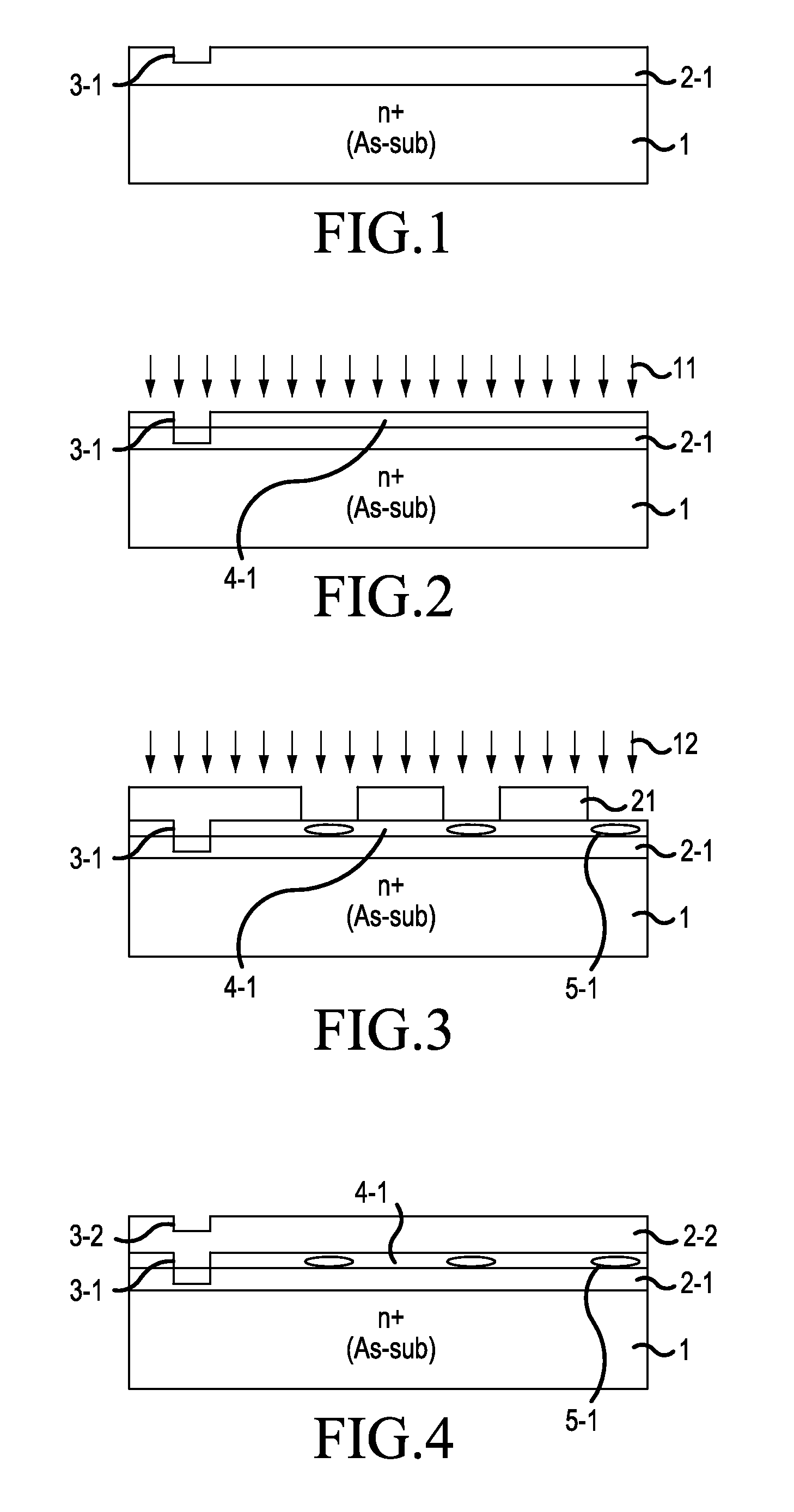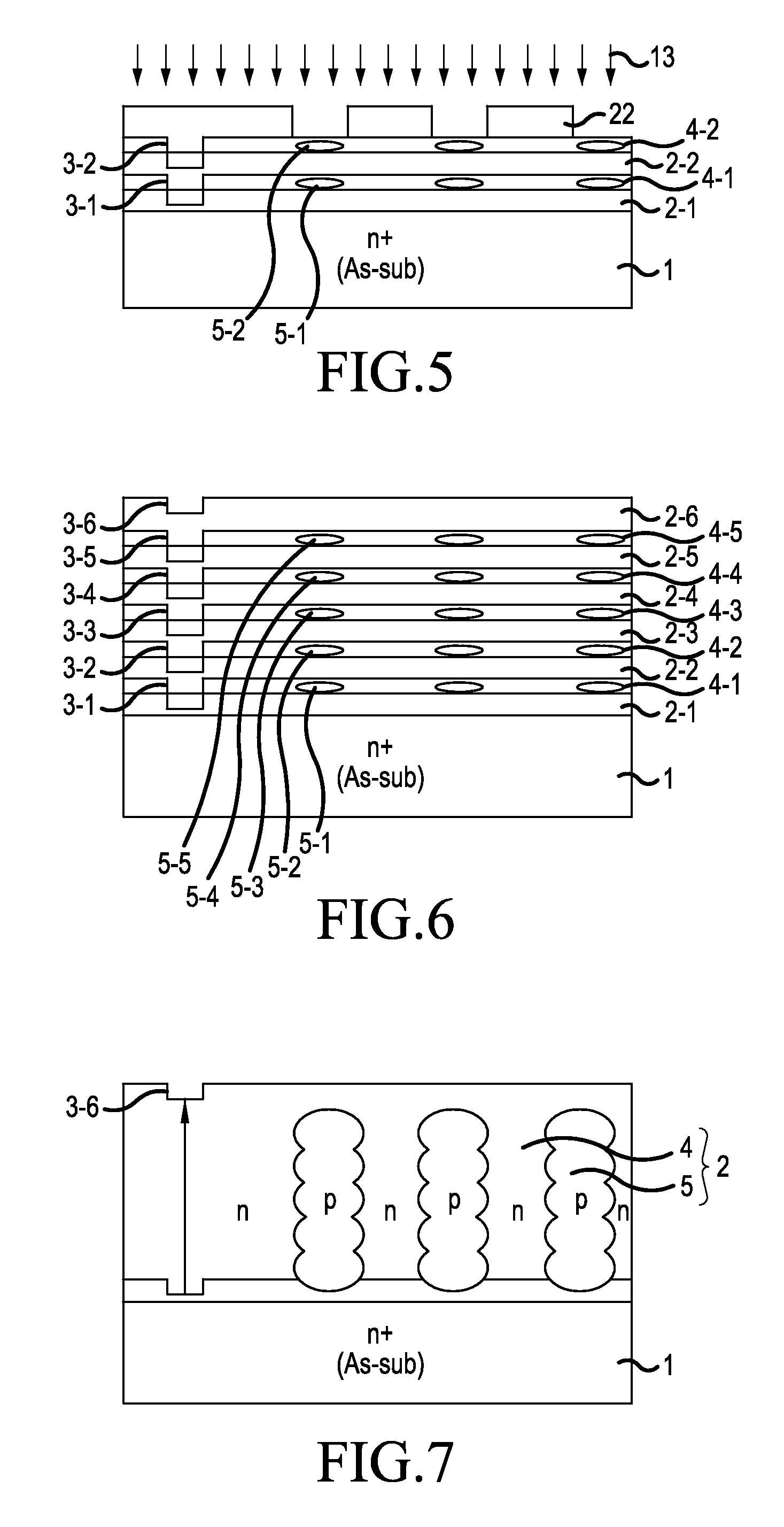Semiconductor device manufacturing method
a manufacturing method and semiconductor technology, applied in semiconductor devices, semiconductor/solid-state device details, electrical apparatus, etc., can solve the problems of inability to carry out patterning positioning, low atmospheric pressure, increase in frequency of maintenance, etc., to prevent auto-doping, prevent breakdown, and prevent the breakdown of alignment mark form
- Summary
- Abstract
- Description
- Claims
- Application Information
AI Technical Summary
Benefits of technology
Problems solved by technology
Method used
Image
Examples
embodiment
[0046]A description will be given of the semiconductor device manufacturing method according to the embodiment, with a case of fabricating a super junction MOSFET as an example. FIGS. 1 to 7 are sectional views showing conditions partway through the manufacture of a semiconductor device according to the embodiment. Firstly, arsenic (As) doped low resistance n+ type silicon substrate (an arsenic doped substrate) 1 is prepared, as shown in FIG. 1. Arsenic doped substrate 1 has a resistivity of, for example, in the region of 1 mΩcm to 4 mΩcm (a doping concentration of in the region of 1.0×1019 / cm3). A semiconductor substrate of the invention may be such that an epitaxial layer of the same conductivity (a first epitaxial layer 2-1) is deposited on arsenic doped substrate 1.
[0047]Next, for example, arsenic doped substrate 1 is mounted on a stage (not shown) provided inside an epitaxial growth device reaction chamber. Then, a raw material gas and a carrier gas are supplied to the inside o...
example 1
[0065]Next, auto-doping was verified. FIG. 10 is a table showing the relationship between the epitaxial growth temperature and an epitaxial growth rate and auto-doping. Firstly, a plurality of specimens wherein an intrinsic epitaxial layer was grown to a thickness of 7 μm on the main surface of arsenic doped substrate 1 were fabricated in accordance with the semiconductor device manufacturing method according to the embodiment. Specifically, a total of 24 specimens were fabricated under six conditions of epitaxial growth rates—1.5 μm per minute, 2.0 μm per minute, 2.2 μm per minute, 2.4 μm per minute, 2.6 μm per minute, and 2.8 μm per minute—for each of four conditions of epitaxial growth temperature—1,050° C., 1,100° C., 1,150° C., and 1,180° C.
[0066]A silicon substrate with a diameter of 6 inches, an arsenic concentration of 2.25×1019 / cm3 to 7.4×1019 / cm3, and resistivity of 1 mΩcm to 4 mΩcm was prepared as arsenic doped substrate 1. The raw material gas G and carrier gas supplied ...
example 2
[0068]Next, the results of a verification of the first alignment mark 40 are shown in FIG. 11. FIG. 11 is a table showing the relationship between the epitaxial growth temperature and the epitaxial growth rate and the first alignment mark. Firstly, a plurality of specimens wherein an intrinsic epitaxial layer was grown to a thickness of 10 μm on the main surface of arsenic doped substrate 1, which has the Si{100} plane as the main surface, were fabricated. The epitaxial growth temperature and the epitaxial growth rate are the same as in Example 1. That is, 24 specimens with differing epitaxial growth temperatures and epitaxial growth rates were fabricated. Conditions other than the plane orientation of arsenic doped substrate 1 are the same as in Example 1.
[0069]Specifically, each specimen was fabricated by making first epitaxial layer 2-1 grow to a thickness of 3 μm on the main surface of arsenic doped substrate 1 and, after alignment mark 3-1 was formed in first epitaxial layer 2-...
PUM
| Property | Measurement | Unit |
|---|---|---|
| thickness | aaaaa | aaaaa |
| thickness | aaaaa | aaaaa |
| diameter | aaaaa | aaaaa |
Abstract
Description
Claims
Application Information
 Login to View More
Login to View More - R&D
- Intellectual Property
- Life Sciences
- Materials
- Tech Scout
- Unparalleled Data Quality
- Higher Quality Content
- 60% Fewer Hallucinations
Browse by: Latest US Patents, China's latest patents, Technical Efficacy Thesaurus, Application Domain, Technology Topic, Popular Technical Reports.
© 2025 PatSnap. All rights reserved.Legal|Privacy policy|Modern Slavery Act Transparency Statement|Sitemap|About US| Contact US: help@patsnap.com



